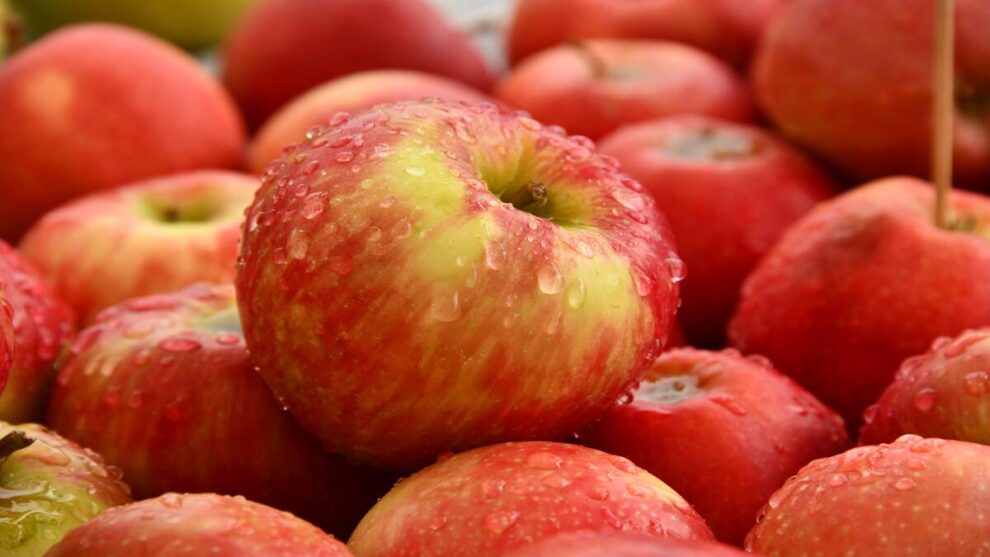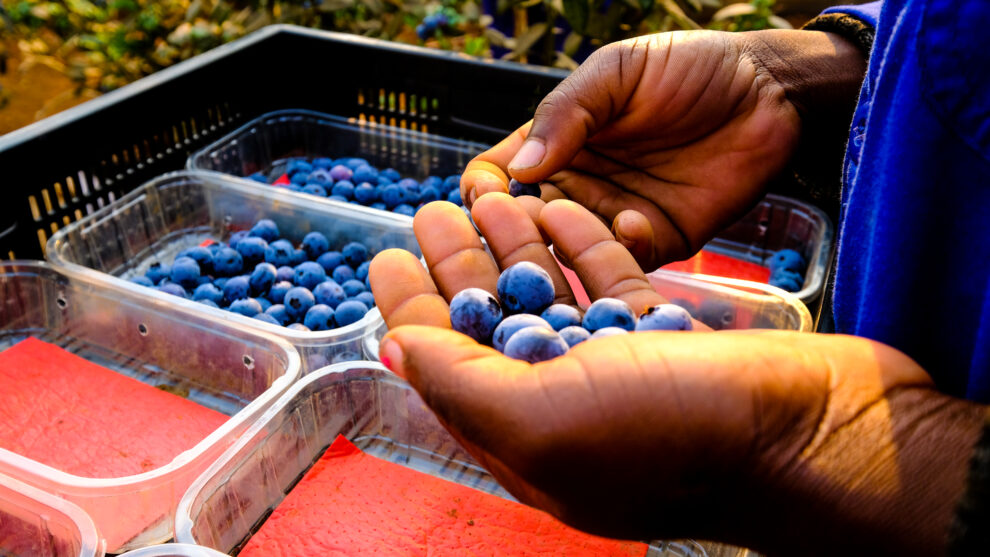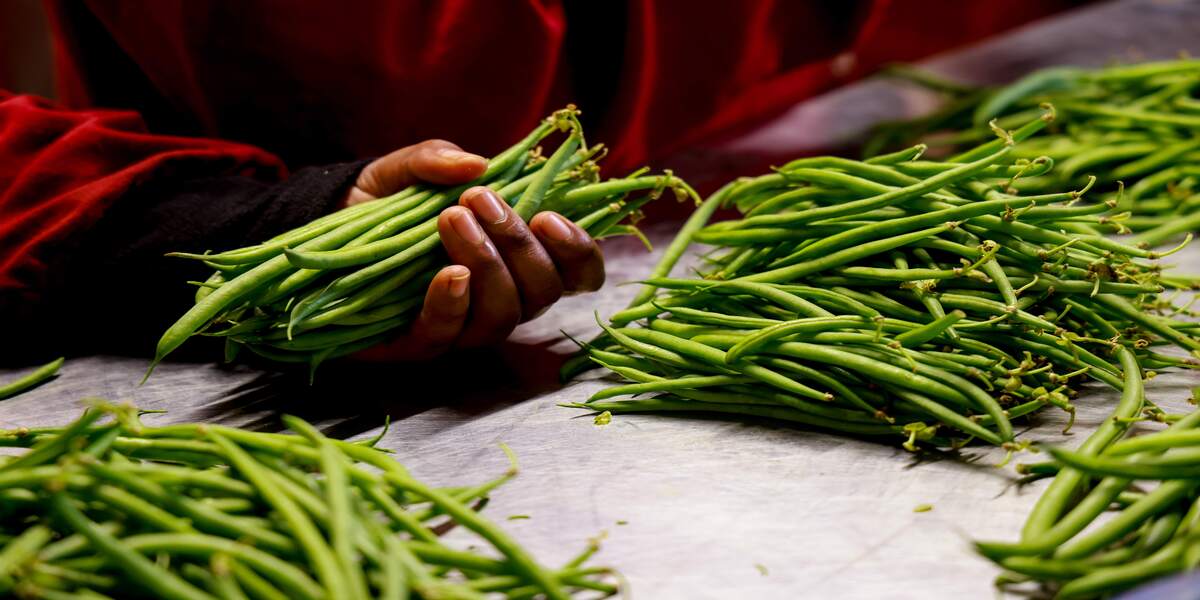Post-harvest cooling solutions for apples, flowers and blueberries across Africa
2022 proved further, that high-quality cold chain infrastructure is key to locking in the quality of the amazing produce grown by our customers and all the benefits this brings, including economic, social and critical climate-related impacts. Last year, InspiraFarms Cooling continued to expand and sold multiple projects across the African continent, adding four new markets. Altogether, these solutions were designed to enable our clients in different sectors to reduce food losses and energy costs and diversify their businesses to become more competitive in local and export fresh produce markets.
1. Cold rooms for apples in Tanzania
Apples are one of the most popular fruits in the world, and in 2020, global apple production amounted to a total of 86.44 million metric tons. With this massive production, the seasonal fruit requires proper handling, cooling, and storage for the overall quality and taste of the ultimate fruit or product that makes its way to end consumers. Fortunately, several excellent cooling and storing methods exist for those who produce, ship or trade apples, including room cooling, forced-air cooling, and hydro cooling. And one of the most common methods is in long-term or controlled-atmosphere storage.
In 2022, InspiraFarms Cooling sold its first solution to a producer of fresh apples, seedlings, and strawberries for the local market in Tanzania. To improve product quality and reduce post-harvest losses, the company was looking to build a packhouse with cold storage facilities, and in 2023, the facility will be installed and commissioned for operation.
The grower is in the Southern Highlands of Tanzania, an environment with ambient temperatures of +28°C, and their core products are fresh apples, currently at a daily throughput of 1,000 to 1,500 kg.
In 2022, InspiraFarms Cooling designed a cold storage that includes blast chillers, and a dispatch cold room, built with high-density Polyurethane insulated sandwich panels to provide energy efficiency, sliding doors and strip curtains. The facility, besides storage capacity, has a cool-down capacity from field to storage temperature (28°C to 1°C) of 6 pallets every 6 hours.
Whether you are a flower, vegetable or fruit exporter, stabilizing product temperature as quickly as possible is fundamental for obtaining the shelf-life and quality required to enter and compete in retail and export markets. Precooling is the process of quickly removing heat to decrease this temperature rapidly, down to the expected core temperature of the fresh produce. Usually, precooling is the first step post-harvest, and it is recommended immediately following harvest to minimize spoilage. In Tanzania, this apple unit integrates forced-air precooling technologies, through its two suction boxes, the cheapest and most portable of our pre-cooling solutions, designed to be energy-efficient, easy to install and to move around as needed. This way, the apple producer will have access to rapid cooling of individual pallets.

2. Cold rooms for mixed fresh produce in Zimbabwe
In 2022, InspiraFarms Cooling sold a unit designed for a handler and exporter of fresh mixed produce in Zimbabwe, for the European, Middle Eastern and Asian markets.
The customer is located in Harare, Zimbabwe, an environment that can reach temperatures of up to +30°C. To cope with increasing production volumes from their tenants and suppliers, the company was looking to upgrade their existing cold storage facilities to include new structures, pre-coolers and holding cold rooms. In 2023, InspiraFarms Cooling will supply, install and commission a refrigeration solution for two pre-cooling rooms, a quarantine area, a common receiving and dispatch area, four holding cold rooms of 80 pallets each, two cooled palletising and packing floors, and a secondary dispatch area for possible future airfreight.
For many fresh produce importers across regions in Europe, precooling is regarded as an indispensable first step for sellers to meet the minimum export standards. Therefore, this Zimbabwean facility will optimise fresh produce cooling efficiency with its precoolers, each having the capacity to treat 20,000 kg of produce. Overall, this facility will enable the Zimbabwean exporter to sell more at better prices, with lower costs and access to data, never before possible.
3. Cold rooms for blueberries in Kenya
Usually, failure to remove field heat adequately will result in shorter shelf lives and lower quality of the fresh produce and losses. For blueberries, removing field heat is critical to extending both the shelf life and quality of the product. In the past, InspiraFarms Cooling has deployed solutions for blueberries, including Lauetta’s and Wiserow’s blueberry cold rooms, and continues to provide similar solutions across Africa.
In 2022, we sold a unit designed for blueberries in Kenya to improve the client’s product quality and reduce post-harvest losses through a cold storage facility. The grower is in Kenya’s Rift Valley, an environment with ambient temperatures that can reach +32°C. The unit includes one cold room of 30 m², fitted with a cooling humidification system humidifier to reduce dehydration of the berries produced during cooling. Further, this unit is one of the standard sized cold rooms designed for smaller out growers, with a storage capacity of 16 pallets and an 8kW cooling machine.
The facility also includes a suction box, the best-suited, entry-level solution for precooling needs, since it will provide the flexibility to cool down each pallet independently very quickly and at a low cost while preserving the quality and increasing shelf-life.
Overall, the cold storage includes blast chillers, a dispatch cold room, sliding doors and strip curtains. The structure also includes a suction box consisting of a forced-air system with a fan and condenser that, when turned on, pulls or forces the airflow on the centre section between the pallets, removing the heat through convection. Additionally, the unit is set up with high-quality Polyurethane panels, for the best energy performance and longevity. For the client, this has been designed with an inverter-driven engine to minimise power use, and a set of temperature and pressure sensors to optimise their cooling treatments, increasing their shelf-life and providing more value for them.
Finally, the customer will have access to InspiraConnect, the IoT solution that supports you and your operation, alongside advanced sensors and data services to optimise cooling with continuous tracking of quality indicators such as temperature, relative humidity, door openings and energy analyzers. InspiraFarms Cooling will install and commission this facility in time for the first harvest of blueberries expected in Q3 2023.

4. Cold rooms and storage for flowers
The cold chain, particularly for cut flowers, must start on-farm right after flowers are picked and cut. For most exporters, flowers are shipped to the airport within 48 hours after picking. During this time, the temperature and humidity conditions ought to be controlled, bringing down the temperature and keeping an ideal range of 1 to 3°C. A pre-cooling treatment before and after grading and after bundling packages for shipment in reefer trucks assures quality control by slowing down decomposition and decreasing shrinkage and resulting in weight reduction.
In 2022, Inspirafarms Cooling entered the flower market, selling a unit designed for an established flower farm in Naivasha, Kenya. The enterprise sought a competitively priced and energy-efficient facility to cool and store fresh-cut roses.
The installation includes a receiving unit for fresh-cut flowers from the field, designed to quickly bring the field heat down to +15°C. The second section is designated for after grading, where flowers are cooled further down to +2°C. Overall, the facility consists of a receiving, dispatch, and intake cold room, all designed to have the highest output in product quality and the lowest dehydration, increasing vase life while minimizing condensation, which can be very harmful to flower quality.
The facility also includes insulated horizontal sliding doors used for cold rooms with temperatures down to +0°C. The doors are complete with an external practical handle and an internal lever handle for easy opening.
To generate the key data required to optimise their cooling performance and energy consumption, and optimise OPEX performance, the flower grower also adopted InspiraConnect, a set of hardware consisting of IoT-enabled sensors. This way, the set of intelligent sensors, loggers, and electronics allow their operating system, InspiraOS, provides them with transparency and access through real-time data monitoring and diagnostics services of their cooling.
The way forward
We are proud to continue to work with such a wide range of exceptional growers across the continent and it has been such a privilege to grow with each one of them into 2023. Into the year, InspiraFarms Cooling will continue to work with agribusinesses across the continent who understand investment in the post-harvest and that cold chain is a great investment for their business, community and environment. Throughout the year, we will continue to work to design solutions that will balance getting the best results for our customers, using as little energy as possible, with IoT embedded to achieve as efficient post-harvest cooling as possible.



